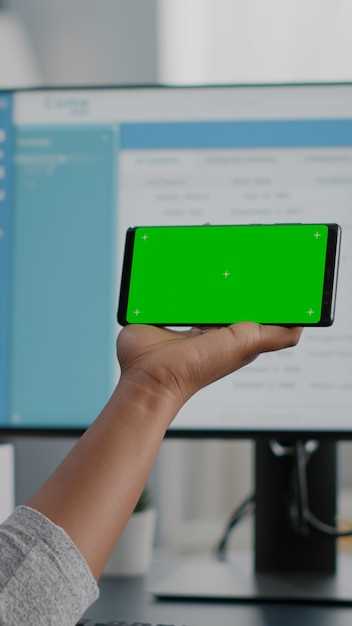
Evaluating the integrity of your Android device’s power source is a crucial aspect of maintaining its longevity and performance. As the number of charge cycles accumulates over time, batteries inevitably experience a gradual decline in their capacity and efficiency. Understanding the current state of your battery is essential to ensure optimal usage and prevent premature replacement.
This comprehensive guide will provide you with an in-depth analysis of various methods for assessing your Android device’s battery health. Through a series of concise steps, you will gain insights into the current status of your battery, enabling you to make informed decisions regarding its maintenance and replacement. Whether you are experiencing unexplained performance dips or simply curious about the remaining life of your device’s power source, this guide will empower you with the knowledge and techniques necessary to accurately monitor and assess your Android battery’s condition.
Examine Battery Performance on Android Devices
Table of Contents

Optimizing your device’s battery life is crucial for uninterrupted use and longevity. This section provides a comprehensive guide to assessing the health and performance of your Android device’s battery.
Here’s a step-by-step approach to diagnose your battery’s status:
| Step | Procedure |
|---|---|
| Battery Usage | Go to “Settings” > “Battery” to view a detailed breakdown of apps and system processes consuming power. |
| Battery Saver | Activate “Battery Saver” to automatically restrict background activity, reduce brightness, and enhance battery life. |
| Temperature Monitoring | Pay attention to any overheating issues, as elevated temperatures can negatively impact battery health. |
| Third-Party Apps | Utilize battery monitoring apps from the Google Play Store to obtain additional insights and recommendations. |
| Charging Habits | Avoid overcharging or exposing your device to extreme temperatures, as these practices can degrade battery performance. |
Monitor Battery Usage
To gain insights into your device’s power consumption, monitoring battery usage is crucial. This comprehensive section will provide you with a step-by-step guide on how to track and analyze your battery’s performance.
Your device’s built-in settings typically offer a dedicated section for battery management. Navigate to this section to access a wealth of information regarding your battery’s status, including its current charge level, estimated remaining time, and detailed usage statistics.
The battery usage data is usually presented in a table format, providing a breakdown of which apps and system processes are consuming the most power. This information is invaluable for identifying potential battery drainers and taking steps to optimize your device’s energy efficiency.
By regularly monitoring your battery usage, you can make informed decisions about app usage, screen brightness, and other settings that impact power consumption. This proactive approach can significantly extend your device’s battery life and ensure optimal performance.
Identify Battery-Draining Apps
Curbing battery wastage is crucial for maintaining smartphone performance. One significant culprit are apps that consume exorbitant energy. Unmasking these power-hungry culprits is vital to optimize battery life.
| Android Version | Steps |
|---|---|
| Android 12+ |
|
| Android 11 |
|
| Android 10 |
|
Calibrate Battery for Accurate Readings
Ensuring your device’s battery displays accurate readings is crucial for optimal performance. Over time, batteries can become desynchronized, leading to incorrect estimations of remaining charge. To address this, battery calibration is recommended to reset the device’s understanding of its capacity.
Step 1: Discharge Battery Completely
| Device | Instructions |
|---|---|
| Android Smartphone | Use the device until it automatically powers off due to low battery. |
| Android Tablet | Use the device until the battery level reaches 0% and the device prompts to connect to a charger. |
Step 2: Charge Device Fully
Connect the device to its charger and allow it to charge to 100%. Do not interrupt the charging process.
Step 3: Recalibrate Battery
| Device | Instructions |
|---|---|
| Android Smartphone | Turn the smartphone off. Press the Volume Up and Power buttons simultaneously for a few seconds until the device enters Recovery Mode. Select “Clear Wipe Battery Stats” or a similar option. |
| Android Tablet | Turn the tablet off. Press the Volume Down and Power buttons simultaneously for several seconds. When the bootloader menu appears, navigate to “Clear Wipe Battery Stats” and select it. |
Step 4: Restart Device
After completing the recalibration process, restart the device. The battery should now provide more accurate readings of its remaining charge capacity.
Extend Battery Life with Tips
Optimizing your device’s battery performance is crucial to ensure its longevity and consistent performance. Here are some practical tips to enhance your battery’s lifespan:
| Tips to Extend Battery Life | |
|---|---|
| Adjust Display Brightness | Dimming the screen brightness reduces energy consumption significantly. |
| Use Dark Mode | Dark-colored themes consume less power than light-colored ones, especially on OLED displays. |
| Enable Power Saving Modes | Most devices offer power-saving modes that optimize battery life by reducing background activity. |
| Disable Unnecessary Features | Features like Bluetooth, GPS, and NFC drain the battery when not in use. Disable them when not needed. |
| Optimize App Usage | Monitor battery consumption by apps and limit the usage of power-hungry ones. Force-closing background apps also helps. |
| Charge Smartly | Avoid overcharging and fully discharging the battery. Charge in smaller increments and avoid extreme temperatures. |
Get Professional Battery Testing
Seeking professional assistance for battery evaluation can provide comprehensive insights into the health and longevity of your device.
| Advantages of Professional Battery Testing |
|---|
|
Identify a reputable repair centre or battery specialist who offers professional battery testing services. These experts possess the knowledge and tools to conduct thorough evaluations, provide accurate diagnoses, and propose appropriate solutions to enhance the lifespan and performance of your device.
– Q&A
How can I check the battery health of my Android phone?
To check the battery health of your Android phone, go to Settings > Battery. Here, you’ll find information about your battery’s health status, usage, and estimated battery life. You may also find additional battery health information in your phone’s manufacturer settings.
What are the indicators of poor battery health?
Signs of poor battery health include shorter battery life, frequent need for charging, overheating, and unexpected shutdowns. You may also notice a decrease in performance or difficulty holding a charge.
Can I improve the battery health of my Android phone?
Yes, there are steps you can take to improve your battery health, such as avoiding extreme temperatures, optimizing charging habits, limiting background app activity, and using battery-saving features when possible.
When should I consider replacing my phone’s battery?
It’s generally recommended to replace your phone’s battery when its health drops below 80%. At this point, you’ll likely experience significant battery life reduction and potential performance issues.
Is it possible to check the battery health of my phone without going into the settings?
Yes, some Android phones have a built-in battery health indicator that you can access from the notification bar. This indicator typically shows a percentage or a simple icon that represents the health status of the battery.
 New mods for android everyday
New mods for android everyday



